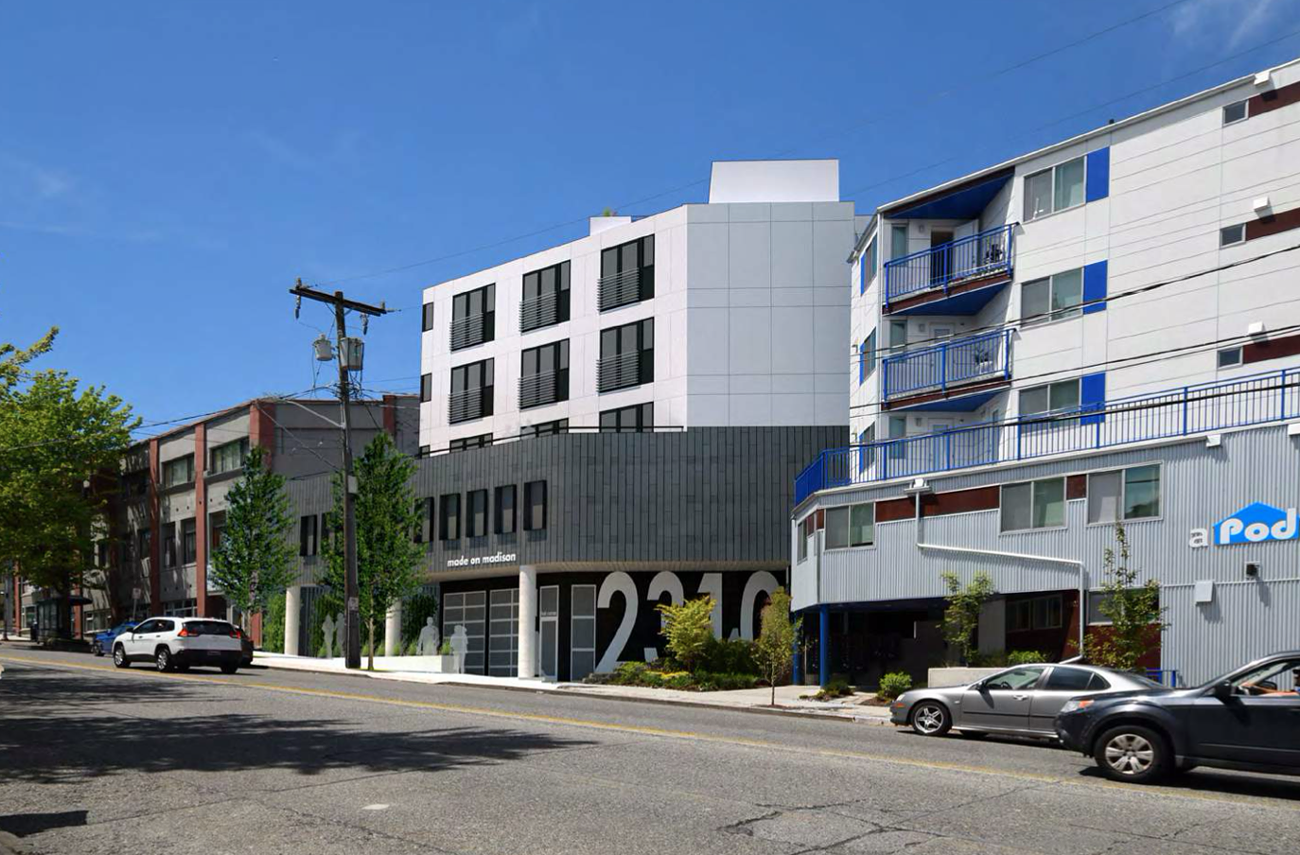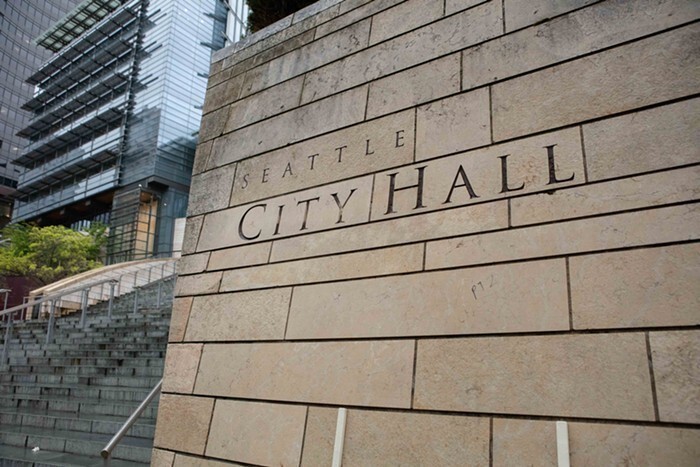District 3 City Council candidate Joy Hollingsworth tried to stop the construction of a five-story building full of small apartments that would have stood alongside a major arterial, according to a letter she sent to the Seattle Department of Construction and Inspections (SDCI) in 2017.
In a text to The Stranger, she said the Black families who could still afford to live on the block banded together that year to raise concerns about the building to the City after years of dealing with other “mismanaged” development in the area.
"I wanted then and I still want today community-led development that keeps communities intact and prevents gentrification and displacement," she said. "This experience helped drive my decision to run for City Council and ensure that underrepresented D3 neighbors have a voice on the City Council."
However, in the 2017 letter, which she wrote as the property manager for three neighboring lots that her relatives own, Hollingsworth did not mention gentrification or displacement. Instead, she complained that new buildings obstructed her view of Bellevue and Lake Washington and deprived her of natural light. She asked SDCI to cap the project at two stories, which would have slashed the number of the building's units by 70%. When the agency ended up approving the apartment construction in 2020, she wrote in an email, “...Soon won't have a back yard but looking up at buildings. It's trash.”
Luckily for Hollingsworth, the current building owner dropped the project, though likely not because of her complaints.
The letter puts Hollingsworth in stark contrast with her opponent, former Transportation Choices Coalition Executive Director Alex Hudson, who is one of–if not the most–militant urbanists in any of the council races. (The Stranger Election Control Board endorsed Hudson in the race.) As Seattle stares down a worsening housing crisis, District 3 voters will have the choice between Hollingsworth, who not too long ago was NIMBY enough to fight off a small apartment building, or Hudson, who claims to have helped build thousands. The distinction is more important than ever with the 2024 City Council responsible for a once-in-a-decade overhaul of the City’s zoning laws in the comprehensive plan update.

The Small Efficiency Dwelling Units (SEDUs) that Hollingsworth tried to derail would have sat near the intersection of two major roads, 23rd Avenue and Madison Street, and replaced two then-unoccupied two-story buildings with 17 small units. Though the owner decided to drop the project, a similar five-story apodment complex stands in a lot right next to the original site, and those units represent some of the most affordable housing in the area. That similar building is by no means a skyscraper, as it barely pokes above neighboring two- to four-story buildings. Its recessed top levels make its height less imposing from the street-level.
The multi-family home seems innocuous now, but back in 2017 the proposed building stirred something within Hollingsworth. In her letter to SDCI Director Nathan Torgelson, she wrote that she and her family “welcome growth” because it “creates much needed housing opportunities. However….” She then went on to describe the difficulties she faced during the previous six years of nearby development. “It seems as if every side of our property has been boxed in by neighbors massive building projects,” which stand four and five stories tall, she wrote.
She added that the new SEDU building would be “incredibly invasive” because it would increase foot and car traffic in the area. Moreover, the developers did not include parking spaces in their plans, which she worried would lead to even more drivers blocking or parking in their driveways.
On top of that, the five-story building would shade its neighbors and block beautiful views as development had already done for her and her family. “Not long ago we were able to enjoy views of downtown Bellevue, Lake Washington and retain unbelievable sunlight,” she wrote of the days before her neighborhood had more neighbors.
Hollingsworth went on to complain about the annoyance of construction noises, “random people” on her family’s property, left-over garbage, and even a pesky builder who thought he could park his excavator in their yard.
In the email, Hollingsworth provided a list of things the department could do to assuage her concerns. She asked that SDCI limit the new building to just two stories, which would only include five units according to the building plans. Alternatively, she said SDCI could zone the land to only allow townhomes–whatever it takes to keep the sunshine, the views, and the neighborhood character intact.
She also asked that construction only occur between 8 am and 5 pm, and that the city give her the contact information for the builder so that she could lodge complaints directly.
Hollingsworth ended her letter by writing, “My hope is that we find a solution we can happily live with because in the end, we all want the same thing.”
No, Hollingsworth. We don’t all want the same thing. Renters want a place to live, and you want a view of Bellevue.
Throughout her campaign, Hollingsworth has expressed apprehension about new housing not by lamenting the loss of views but by raising concerns about the displacement of lifelong, marginalized Seattleites. In a June endorsement meeting with the Stranger Election Control Board, she took the weakest stance of any of her opponents on the city’s growth plans. And in an earlier interview, she moderated her support for housing growth with calls to add density in a way that maintains a neighborhood’s character, like converting single-family homes into duplexes and triplexes.
As she told The Stranger in that initial interview, “We have to be comfortable with diversity, but we also have to respect some neighborhoods. Some neighborhoods that, you know, would like to continue to still preserve… I'm pretty sure you don't want to see apartment buildings everywhere in the city. Like, I don't."
















